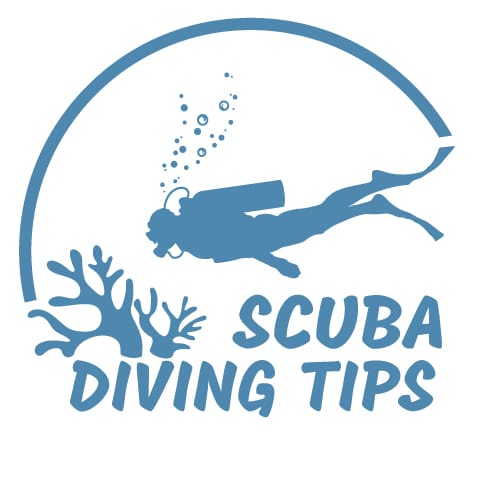The Fin Pivot is one of the oldest techniques that you can use to practice controlling your buoyancy with your lungs. It is very important to have great buoyancy while scuba diving and try to use our lungs as the main part to control that buoyancy. The Fin Pivot is perfect to learn to use your lungs the right way in the beginning or your scuba diving lessons.

Is the Fin Pivot an out of date skill?
The Fin Pivot used to be a performance requirement in the PADI Open Water Diver Course. Some years ago PADI updated standards and made it a flexible technique to choose when practicing buoyancy with your students.
The reason for this was because many people had what we call floaty ankles. This made it very hard on them to perform this scuba diving skill. So now it is optional to teach the Fin Pivot in the Open Water course. If you choose not to teach the Fin Pivot, then you need to replace it by another buoyancy technique like for example hovering.
Steps for the PADI Fin Pivot Skill
1. Make sure you are fully deflated
2. Lay flat on your belly
3. Spread your legs and try to stretch them
4. Inhale and see if you start to rise
5. If not than add a little bit of air into your BCD by using the inflator button of your LPI
6. Take another deep breath (if you still don’t rise, then repeat the steps before)
7. When you inhale you should start to rise
8. When you start rising start exhaling as there is a delay in buoyancy and the size of your lungs
9. try not to kick, scull and do “push-ups” with your hands
10. Be streamlined and only rise and fall using your lungs
Important: Make sure the when you perform the Fin Pivot that your fins are not touching any aqua life.
Have a look at this video we made for the Fin Pivot skill:
Please SUBSCRIBE to our Scuba Diving Tips YouTube Channel
How to solve floaty ankles when Scuba Diving?
Floaty ankles can be an annoyance while scuba diving. Especially if you try to perform the PADI Fin Pivot Skill. To solve floaty ankles we recommend you to purchase heavy fins and/or ankle weights. Have a look at these two items:

Scuba Pro Jet Fins

Trident Ankle Weights
Next Skill: CESA – Controlled Emergency Swimming Ascent
Frequently Asked Questions About the Fin Pivot in Scuba Diving
What is the Fin Pivot in scuba diving?
The Fin Pivot is a foundational technique used in scuba diving to practice and understand buoyancy control. By lying prone on the bottom and using controlled breathing, divers learn to rise and fall gently, achieving neutral buoyancy. This exercise emphasizes the role of lung volume in buoyancy adjustments.
Why is mastering the Fin Pivot important for divers?
Mastering the Fin Pivot helps divers develop precise buoyancy control, leading to:
- Reduced air consumption.
- Minimized contact with the aquatic environment, preserving marine life.
- Enhanced comfort and control underwater.
It lays the groundwork for more advanced skills like hovering.
Is the Fin Pivot still a required skill in PADI courses?
While the Fin Pivot was once a mandatory skill in the PADI Open Water Diver course, it has become optional in recent years. Instructors may choose to teach it or substitute it with other buoyancy exercises like hovering, depending on student needs and course structure.
What are the steps to perform the Fin Pivot correctly?
- Fully deflate your BCD.
- Lie flat on your stomach on the bottom.
- Extend your legs with fins touching the ground.
- Inhale deeply; your upper body should rise.
- Exhale slowly; your body should lower back down.
- Avoid using hands or kicking; rely solely on breath control for movement.
How does the Fin Pivot differ from hovering?
The Fin Pivot involves maintaining contact with the bottom, using fins as a pivot point, and focusing on vertical movement through breathing. Hovering requires maintaining a stationary position mid-water without any contact, demanding more advanced buoyancy and trim control.
What equipment can assist with performing the Fin Pivot?
Divers experiencing “floaty ankles” can benefit from:
- Heavy fins: Such as ScubaPro Jet Fins, which help anchor the legs.
- Ankle weights: Like Trident Ankle Weights, to counteract buoyant tendencies in the lower body. scubadivingtips.net
Can the Fin Pivot be practiced in all diving environments?
The Fin Pivot is best practiced in controlled environments like pools or sandy bottoms where contact won’t harm marine life. In sensitive ecosystems, divers should avoid bottom contact and focus on mid-water buoyancy exercises to prevent environmental damage.
How does mastering the Fin Pivot benefit overall diving skills?
Proficiency in the Fin Pivot enhances a diver’s ability to control buoyancy using breath, leading to improved air efficiency, better positioning in the water column, and a foundation for advanced techniques like hovering and precise maneuvering.
Are there visual resources to learn the Fin Pivot?
Yes, visual demonstrations can be highly beneficial. For instance, the “Fin Pivot – PADI Open Water Diver Course” video provides a clear demonstration of the technique seen above shows this or watch the full PADI Open Water Skills video:


Leave a Reply